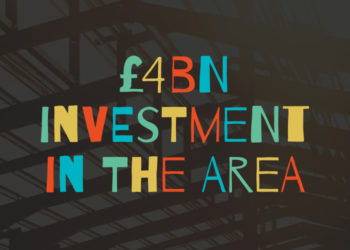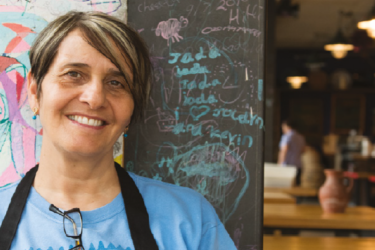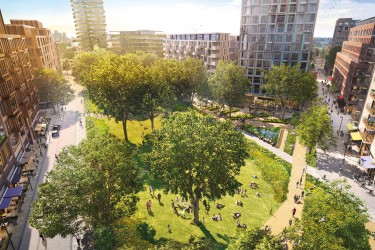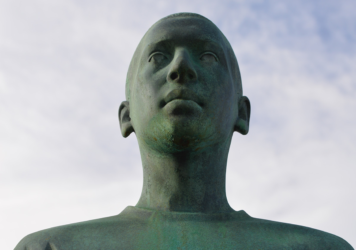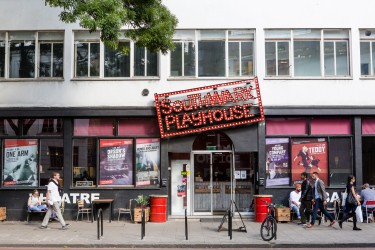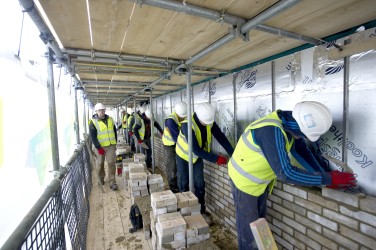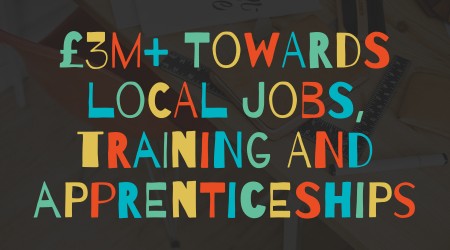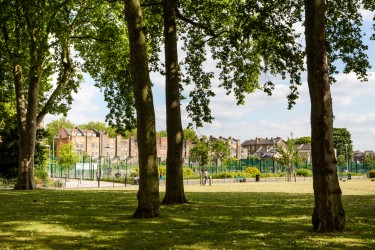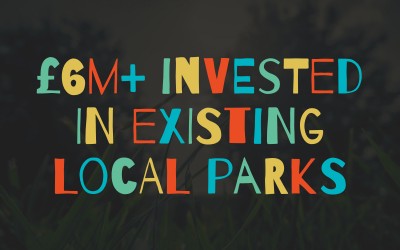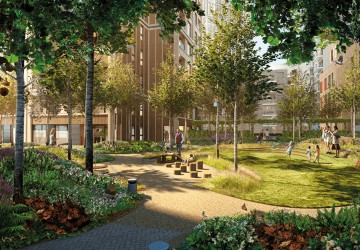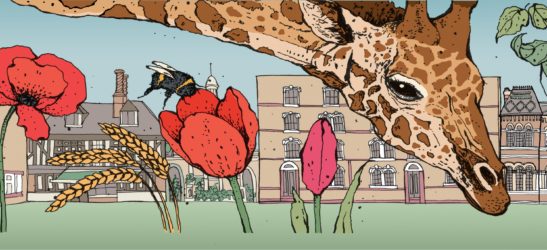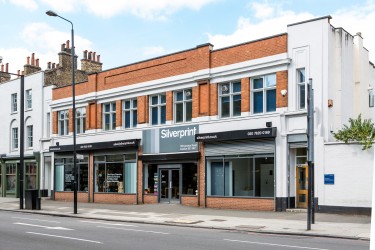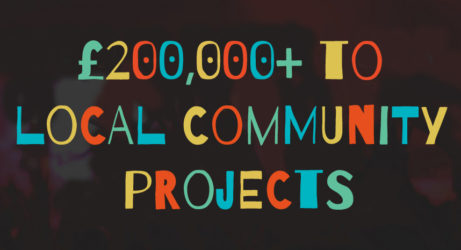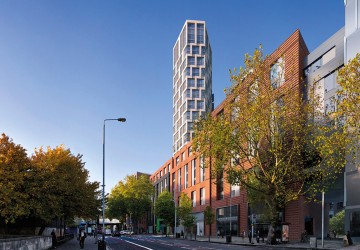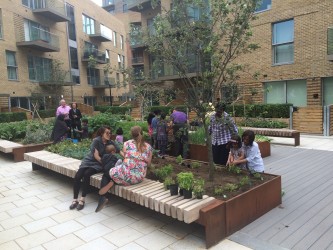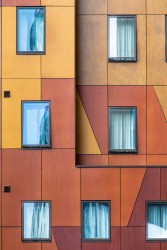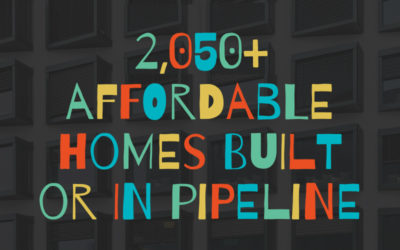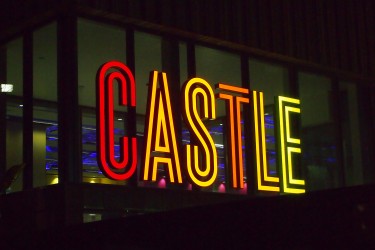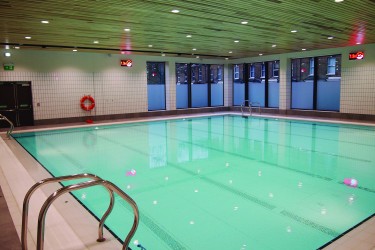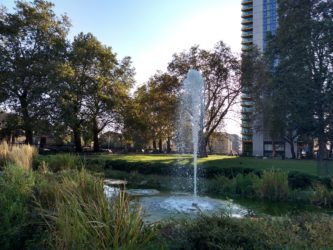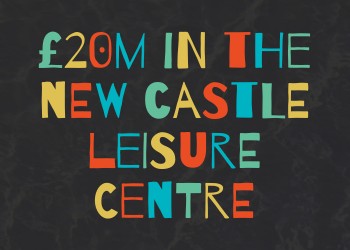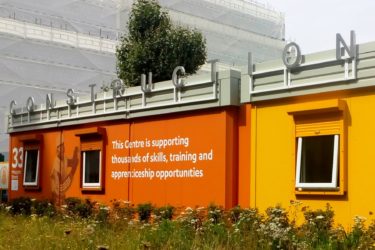More than £4bn is being invested in the regeneration of Elephant and Castle. This investment includes new homes, better transport and public realm, improved shopping and leisure, new schools and community centres, and thousands of new jobs and training opportunities.
Housing
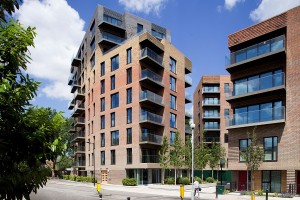
The central driving force behind the regeneration is London’s need for new housing for people of all income groups. Therefore housing is at the heart of almost every development being built in Elephant and Castle.
Thousands of new homes have already been built in the area over the past decade, including more than 2,000 affordable homes either completed or under construction. This number is set to rise dramatically.
In total, by 2025 more than 5,000 new and replacement homes will have been built in the neighbourhood, including at least 2,300 affordable homes. Lendlease’s award-winning Trafalgar Place has already delivered 235 homes and they’re delivering 2,500 more across Elephant Park (of which at least 25% will be affordable). Over 1,000 new homes will also be delivered in the new town centre, with the majority available for rent rather than sale.
The new homes are being made available with a range of tenures from private ownership through to social rent, with a commitment from Southwark Council to achieve a minimum of 35% affordable housing across the whole regeneration area. Most of the new developments, including Elephant Park, include a mix of housing, with privately owned and rented apartments alongside homes for social rent or shared ownership. Some schemes, such as Harper Road, are 100% affordable housing, while others, such as One the Elephant, consist entirely of homes for private sale.
Jobs, training and education
The regeneration is expected to create over 10,000 new jobs.
By boosting the neighbourhood’s infrastructure and the local economy, and creating new places to work, sustainable jobs are being generated throughout Elephant and Castle, in offices, retail and restaurants, as well as cultural venues.
over 10,000 new jobs
In the short-term, many jobs and training opportunities are being created by the huge amount of construction work that is underway. Lendlease, one of the biggest developers in the area, expects to create more than 6,000 jobs overall and has already employed more than 1,500 local residents. It has also awarded more than £4m in contracts to local businesses.
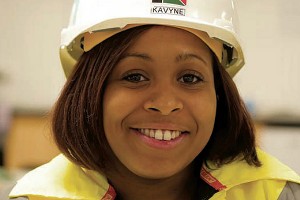
Over £3m has gone into training and apprenticeships. In addition, local training schemes, such as Lendlease’s Be Onsite, have helped long-time unemployed residents gain new skills, work experience and ultimately jobs in the construction industry and associated fields.
The Southwark Construction Skills Centre operated at Elephant Park from 2016 to 2021. It trained more than 8,000 people in Elephant and Castle and is continuing to help Southwark residents to learn the skills needed to access jobs in construction at its new location in Canada Water.
The area has long been a centre for learning, with the two universities – London College of Communication and London South Bank University – a fundamental part of the area’s past and its future. New or revitalised academic facilities are intrinsic to the regeneration, including a new campus for London College of Communication.
Overall, education and culture in the area is being boosted by a £240m investment – further raising academic achievement and supporting local people into work.
Transport and connections
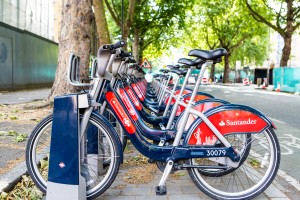
At least £150m is being invested in transport, including roads, cycling, walking routes and the public areas around them.
Throughout London, an increasing emphasis is being put on creating attractive, walkable streets and neighbourhoods; designing places for people on foot rather than just those in cars. Elephant and Castle is at the forefront of this change.
Since the 1960s the area has been defined and dominated by a road system that marginalised the local population and put their needs second to the movement of vehicles. This is now changing. The vision for the Elephant is to create a fantastic town centre that actually feels like it’s been planned for people: a place that’s enjoyable to walk around and spend time in, rather than simply a place to pass through on the way to somewhere else.
In 2016, Transport for London altered the local road layout to turn the northern roundabout into a ‘peninsular’ and create a major new public space, Elephant Square. This has helped to reduce the impact of traffic and has made the area feel cleaner and greener.
Now, for the first time since the 60s, all pedestrian crossings are at street level rather than through a network of underpasses. The pavements have been widened and there have been improvements for cyclists, including new routes and a new Cycle Superhighway which links Elephant and Castle directly with King’s Cross.
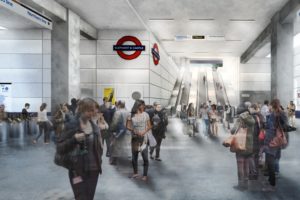
When the new town centre is complete, the Northern Line tube station will get a new entrance on Elephant Square. It will include a vastly improved ticket hall and it will be much more accessible for passengers. TfL also has plans to extend the Bakerloo Line from Elephant and Castle to Lewisham and possibly on to Hayes.
The new town centre will open up better walking routes and it will reinstate some of the street pattern that was lost in the 60s to the shopping centre and the road network. This will include restoring the route between Walworth Road and the town centre and other new connections. Pedestrians and commuters will benefit from better links between transport modes while visitors will be able to find their way around more easily, thanks to improved signage.
Parks and public spaces

As well as new routes through the neighbourhood, the regeneration is also improving and creating public space for people to enjoy and spend their leisure time in.
All the major new developments will make a contribution. The most significant is the Elephant Park scheme, which incorporates a major new park for London. This 1.5 hectare green space includes 400 trees, including 122 mature trees retained from the former Heygate estate.
There will be many more trees planted elsewhere too – more than 1200 in total – and there will be more investment in open spaces throughout the neighbourhood. £6m is being spent to renovate local parks. This includes Pullens Gardens, Victory Community Park, Dickens’ Fields, Nursery Row Park, Newington Gardens and St Mary’s Churchyard.
Three new public squares have been created in the area too. The first was Elephant Square – created by TfL on the site of the former northern roundabout. This was followed by Castle Square (built as part of Delancey’s development at Elephant Road) and then Walworth Square, now home to the Southwark Memorial, which opened at the end of 2018.
Read more about improvements to parks and walking routes.
Community

The changes underway will benefit everyone in Elephant and Castle.
Some of these, such as the improvements to parks and streetscape or the new housing, shopping and job opportunities, are increasing month-by-month, year-by-year. Others, such as the £20m Castle leisure centre, are making a big difference right now, providing state of the art swimming, sports and studio space in the heart of the neighbourhood.
Throughout the area, the community is benefitting from a range of new amenities, such as the new Heritage Centre and Library which opened in 2021 or the Southwark Playhouse which opened in 2023. These will soon be joined by the restored Walworth Town Hall which will include a new community space.
In addition, investment is going directly into many local community projects. The Crossway Christian Centre is one such beneficiary and dozens of community groups have been awarded more than £400,000 in grants through the Elephant and Castle Community Fund with many more now benefitting from the Inspiring Elephant Fund which launched in 2022.
Overall, £1.3m is going in to projects to support public health.
Culture and creativity
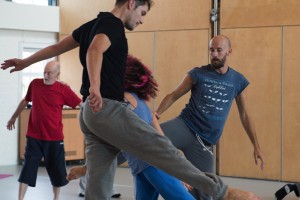
Elephant and Castle is a microcosm of London’s diversity, creativity, culture and endless opportunity.
The area is peppered with creative enterprise, from small studios and workspaces, such as Iliffe and Pullens Yard or the Siobhan Davies Dance studio to the world class tourist attraction that is the Imperial War Museum.
Southwark Playhouse, which still has a temporary theatre on Newington Causeway, has now put down permanent roots with a new, purpose built-theatre in Realstar’s Uncle building. The Blue Elephant flies the flag for fringe theatre in the south of the neighbourhood while BOLD Theatre occupies temporary space on St George’s Road.
Close by, the Cinema Museum, on Dugard Way, evokes the golden age of the ‘picture palaces’ for which the Elephant was once famed. Fittingly, it’s located in a converted poorhouse, once home to the local boy destined to become the world’s greatest film star, Charlie Chaplin.
Continuing the cinematic theme, London College of Communication is home to the Stanley Kubrick Archive, one of the most unique collections of late 20th Century culture in Britain and, since 2016, has been training a succession of new film makers at its new Screen School. The Elephant’s other university, London South Bank, is similarly a magnet for creative minds – not least because of the Clarence Centre which houses a thriving community of entrepreneurs, start-ups, innovators and business experts.
Working closely with both universities, local not-for-profit company Hotel Elephant has been supporting the borough’s artists and makers for more than a decade. In 2016 they moved to new premises on Spare Street; a row of railway arches dedicated to creative enterprise, named in honour of Walworth artist Austin Osman Spare.
The council’s new Southwark Heritage Centre and Walworth Library opened in 2021 in new premises built by Lendlease at Elephant Park. The centre houses much of the borough’s extensive heritage collection (much of it on display for the first time) alongside a fantastic, new local library for Elephant and Castle.
In 2025, working with General Projects, the council delivered a new community space in the restored Walworth Town Hall complex. Overseen by the Walworth Town Hall Community Space Board, this is somewhere for community functions, celebrations, yoga classes, English lessons, art workshops and anything else the local community want to use it for.

The Elephant is also home to a large Latin American community whose culture infuses the area with a unique dynamism. Carnaval del Pueblo, which runs Europe’s largest Latin American event has long been based in the area.
There are also many ‘meanwhile’ spaces being used productively throughout the Elephant such as Mercato Metropolitano an Italian market and food and drinks venue housed in a disused paper factory on Newington Causeway. Making use of temporary spaces in this way brings the area to life during the transition period created by the regeneration.
The Elephant’s creative pulse is vital to its future. We’re determined to retain and create space for creative communities. Collectively, we’re devising a cultural offer to ensure that arts and culture are at the heart of as many local developments as possible.
